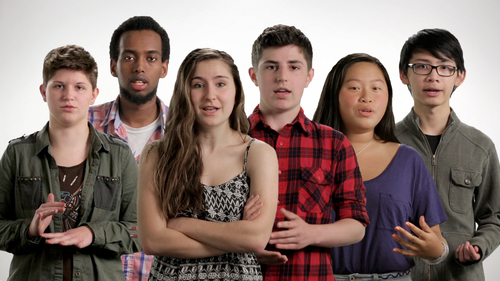By Besmartbewell.com, Special for USDR

Bullying and cyberbullying are a part of growing up today. Surveys show that nearly 30 percent of middle and high school students have been bullied at school and 43 percent have experienced cyberbullying in the past year.
Those witnesses, the bystanders, are the key to ending bullying, say experts interviewed by besmartbewell.com. “Bystanders have a powerful influence in preventing bullying,” says Julie Hertzog, director of PACER’S National Bullying Prevention Center. “It has such power when peers are saying, ‘nobody deserves to be harmed; everybody deserves to be treated with respect.'”
In two new videos at besmartbewell.com, anti-bullying experts and high school students offer tips for how bystanders can stand up to bullying. Watch Bullies and Bystanders: What Teens Say and Bullies and Bystanders: What Experts Say.
Role of the bystanders
Many kids witness bullying in traditional settings like school hallways; but cyberbullying has heightened the intensity by providing a much broader audience. Many kids don’t initiate cyberbullying, but add fuel to the fire by liking, sharing or commenting on online posts that attack another person. “It’s so easy to say something and not even realize the impact that it’s having on people,” says a teen in Bullies and Bystanders: What Teens Say.
Kids who ignore bullying may think they are doing the right thing; but in reality, their silence empowers the bully, says Hertzog. “So much of bullying is about silence,” she told besmartbewell.com. “You’re giving power back to the bullying situation when you’re not saying something.”
How bystanders can stand up
The first step in standing up to bullying is to report it to a trusted adult, Hertzog says. And the second is to support the victim. “Be that person who says ‘you are not alone.’ You could do that by approaching them after the bullying situation and say, ‘hey, I saw what happened, it’s not cool. You didn’t deserve that,'” she explains.
How parents can help
Parents play an important role in helping kids transition from passive bystander to helpful bystander. To start, teach kids that reporting bullying is not tattling; it is the right thing to do, says Det. Charles F. Hollendoner, a Chicago Police Department detective featured in Bullies and Bystanders: What Experts Say. “Kids need adults to help them. Kids can’t stop bullying by themselves,” he explains. “If you don’t tell anybody it’s going on, nobody can help fix it.”
For more tips on talking to kids about bullying, read these Habits2HaveSM.
Learn More
Besmartbewell.com/bullying provides practical information about bullying and cyberbullying. The website includes:
- Slideshow that outlines “Five Ways to Stand Up to Bullying”
- Interviews with real kids, teens and anti-bullying experts
- A quiz to test how much you understand about bullying and cyberbullying
At the site, visitors can also sign up for the bimonthly Spotlight Newsletter and biweekly News Alerts for more in-depth articles and breaking news on bullying and other important health topics.
About Be Smart. Be Well.
Be Smart. Be Well. is compliments of Blue Cross and Blue Shield of Illinois, Blue Cross and Blue Shield of Montana, Blue Cross and Blue Shield of New Mexico, Blue Cross and Blue Shield of Oklahoma and Blue Cross and Blue Shield of Texas, Divisions of Health Care Service Corporation, a Mutual Legal Reserve Company, an Independent Licensee of the Blue Cross and Blue Shield Association.


Average Rating